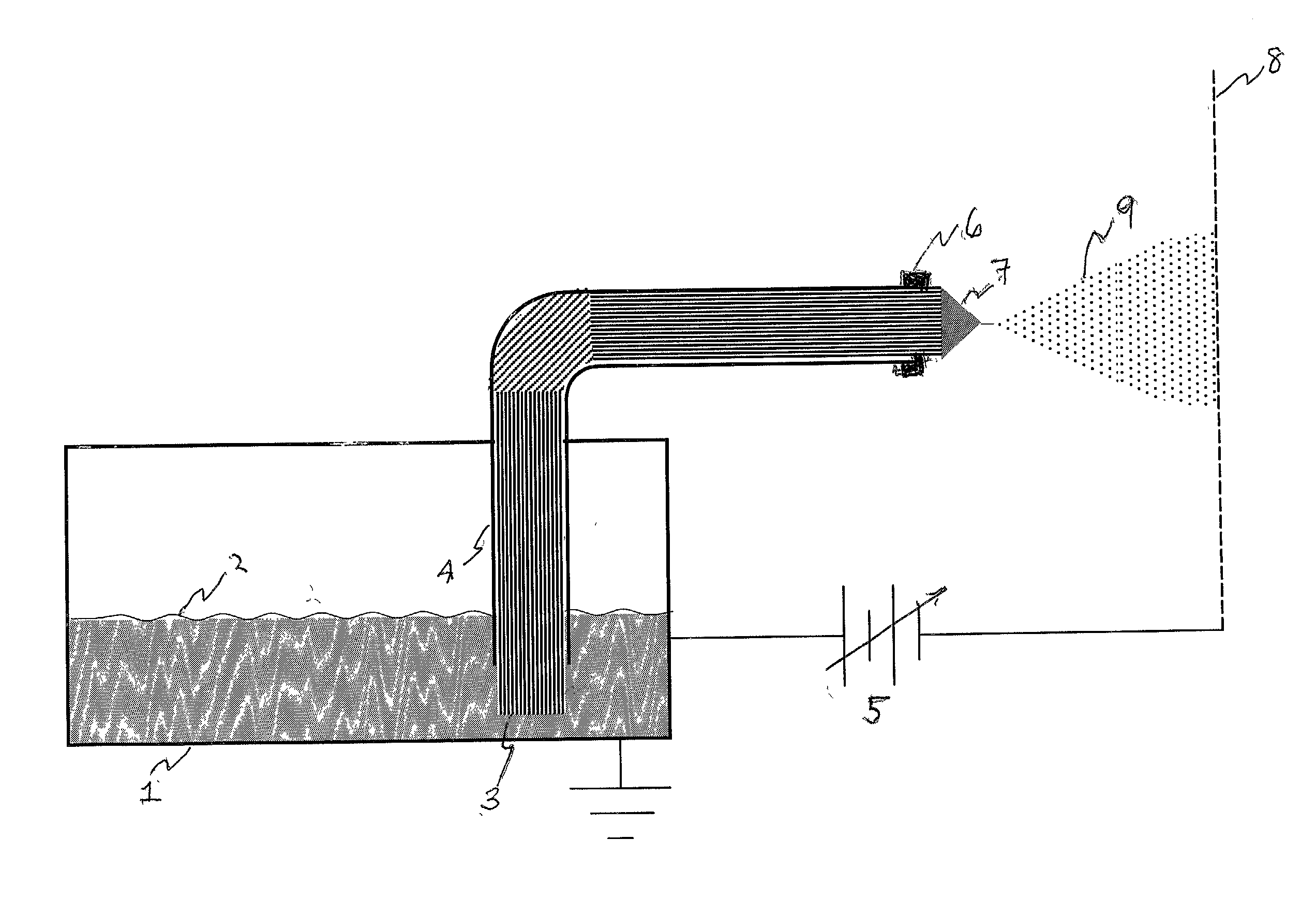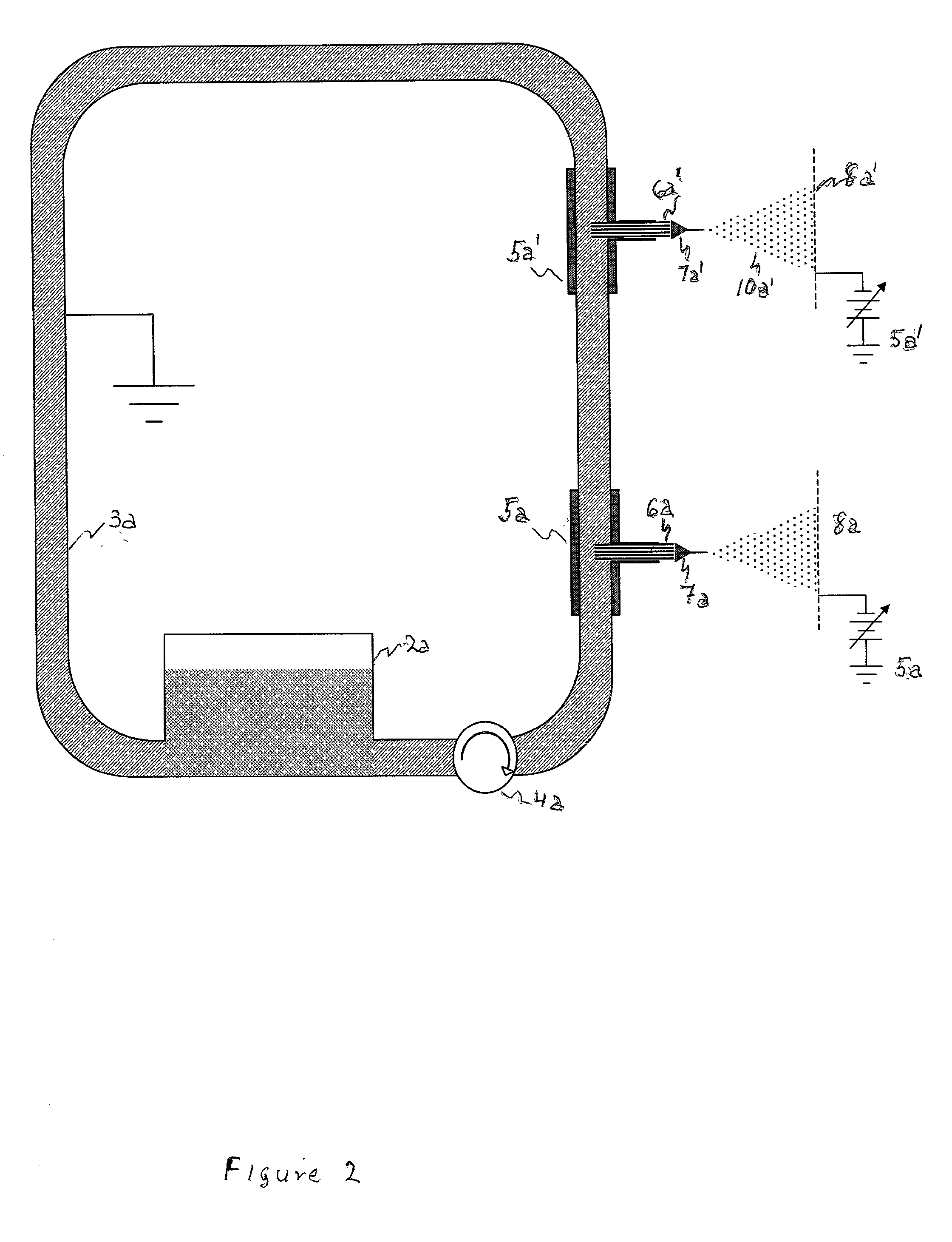Wick injection of liquids for colloidal propulsion
a technology of colloidal propulsion and liquid injection, which is applied in the direction of marine propulsion, machine/engine, vessel construction, etc., can solve the problem of water being lost from the wick by evaporation
- Summary
- Abstract
- Description
- Claims
- Application Information
AI Technical Summary
Problems solved by technology
Method used
Image
Examples
Embodiment Construction
[0012] We have found that very stable electrosprays are readily produced when capillarity driven flow through a wick structure introduces a relatively nonvolatile conducting liquid into a high field region at very low pressure or in vacuum. FIG. 1 shows schematically the essential features of an arrangement by which such an electrospray is readily produced. Grounded reservoir 1 contains a supply of propellant liquid 2 having a low volatility. Wick 3, of a porous material wettable by liquid 2, extends from immersion in liquid 2 through conduit 4, terminating at or near its exit plane. It may sometimes be desirble to let the wick extend for a short distance beyond that exit plane. A seal 7 placed at the exit end of the tube limits leakage of liquid by flow around the wick. Such a seal may comprise a drop of cement that is allowed to set while the wick is dry and before liquid is added to reservoir 1. The cement should be such that it is not soluble in liquid 2 after it has set. Altern...
PUM
 Login to View More
Login to View More Abstract
Description
Claims
Application Information
 Login to View More
Login to View More - R&D
- Intellectual Property
- Life Sciences
- Materials
- Tech Scout
- Unparalleled Data Quality
- Higher Quality Content
- 60% Fewer Hallucinations
Browse by: Latest US Patents, China's latest patents, Technical Efficacy Thesaurus, Application Domain, Technology Topic, Popular Technical Reports.
© 2025 PatSnap. All rights reserved.Legal|Privacy policy|Modern Slavery Act Transparency Statement|Sitemap|About US| Contact US: help@patsnap.com



